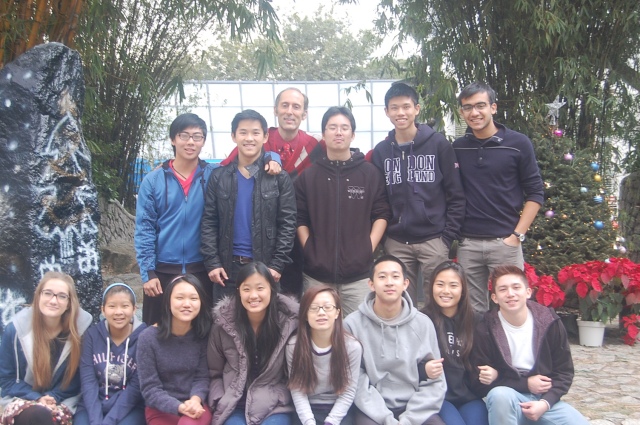 This semester’s “Service, Society, and the Sacred” class studied a wide range of topics: depression, suicide, technology, the future, Asian and Western ways of thinking, Spiral Dynamics, the Enneagram, meditation, and spiritual practices. Despite this organic and at times non-sequitur approach to the curriculum, the three constants were self-awareness, creating a class community, and contributing beyond the classroom to others. The enthusiastic response by students to the class has made me wonder what made it work. It certainly wasn’t the linear delivery of a curriculum. Upon reflection, perhaps there was more to what happened than meets the pedagogical eye, as I share in this entry.
This semester’s “Service, Society, and the Sacred” class studied a wide range of topics: depression, suicide, technology, the future, Asian and Western ways of thinking, Spiral Dynamics, the Enneagram, meditation, and spiritual practices. Despite this organic and at times non-sequitur approach to the curriculum, the three constants were self-awareness, creating a class community, and contributing beyond the classroom to others. The enthusiastic response by students to the class has made me wonder what made it work. It certainly wasn’t the linear delivery of a curriculum. Upon reflection, perhaps there was more to what happened than meets the pedagogical eye, as I share in this entry.
Introduction
I can remember asking myself as a young teacher, “Where is the power of education to transform lives?” My answer to that question over the past two decades has been social conscience education in which students explore contemporary issues both in the classroom as well as through service-learning. Humanities I in Action, a course that my colleagues and I began teaching more than a decade ago at HKIS, often makes a deep impact upon students; I believed that I had found the answer to my question.
However, two developments in the last couple of years have raised this issue anew. A speech by one of our students, Jaclyn, at a community gathering two years ago, was a turning point. Jaclyn, a model Humanities I in Action student three years before, shared  as a senior this reflection on her 9th grade self: “For the first two years of high school, I separated life into the big and small things. The big things meant much more to me than did the small things. When I learned about the Rwandan genocide, factory farms, and other pressing global issues during Humanities In Action, I was moved to help solve these big issues. I was so busy advocating against animal abuse and the unfair treatment of refugees yet I would come home every day and act ice cold with my grandfather . . . . Every time I think of it I cringe in disgust and guilt.” Humanities I in Action was powerful at the level of social engagement, but left Jaclyn lacking empathy for a family member.
as a senior this reflection on her 9th grade self: “For the first two years of high school, I separated life into the big and small things. The big things meant much more to me than did the small things. When I learned about the Rwandan genocide, factory farms, and other pressing global issues during Humanities In Action, I was moved to help solve these big issues. I was so busy advocating against animal abuse and the unfair treatment of refugees yet I would come home every day and act ice cold with my grandfather . . . . Every time I think of it I cringe in disgust and guilt.” Humanities I in Action was powerful at the level of social engagement, but left Jaclyn lacking empathy for a family member.
The second inflection point was meeting Episcopalian  priest and mystic Cynthia Bourgeault and learning about what she calls the Wisdom tradition. Through her teachings I have learned about the role of spiritual practices in reforming the human person at the fundamental level of psyche. Such a re-structuring seemed to be the kind of inner work that Jaclyn needed as a complement to her awakening in Humanities I in Action.
priest and mystic Cynthia Bourgeault and learning about what she calls the Wisdom tradition. Through her teachings I have learned about the role of spiritual practices in reforming the human person at the fundamental level of psyche. Such a re-structuring seemed to be the kind of inner work that Jaclyn needed as a complement to her awakening in Humanities I in Action.
In my work with Cynthia, I have been particularly interested in her claim that Jesus taught not only a path of transformation, but that his life story and teachings in and of themselves mediated a spiritual power that enabled followers to stay on the transformative path. His words activated within listeners their “own power of inner recognition” (Bourgeault, 2004, 3) that testified that spiritual renewal was underway. Through my own explorations with spiritual practices in the Wisdom tradition, I am suggesting that there is something even more powerful than holistic education, as my colleagues and I have been implementing in our Humanities I in Action course. Based on Cynthia’s teachings and the writing of professor Chris Bache, I tentatively call this method a pedagogy of spiritual activation.
Holistic Education
One of the ways to understand the effectiveness of a course like Humanities I in Action is to see it through the lens of holistic education, an approach that opens up all phenomena to study for the purpose of whole-child development. Holistic education has a set of common characteristics:
Interconnectedness: If the essence of the machine era of education has been fragmentation (Alexander, 2006; Kennedy, 2005), then the core belief of holistic education is that everything is interconnected (Miller, 2007; Selby, 2002). As environmental pioneer John Muir noted, “When we try to pick out anything by itself, we find it hitched to everything else in the universe” (1911, 110). Muir intuited the main finding of 20th century physics: the  world is interrelated at the subatomic level. According to Palmer and Zajonc (2010), this is the ontological reality upon which holistic education builds its case. To seek to build relationships between students and issues in the world as well as creating a community of learners are in concert with the modus operandi of the universe.
world is interrelated at the subatomic level. According to Palmer and Zajonc (2010), this is the ontological reality upon which holistic education builds its case. To seek to build relationships between students and issues in the world as well as creating a community of learners are in concert with the modus operandi of the universe.
Transcending dualities: The fragmentation that modern people experience is easily named: school vs. life, objective study vs. subjective experience, materialism vs. spirituality, mind vs. matter, inner vs. outer, self vs. other,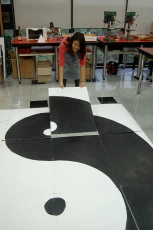 nature vs. technology, head vs. heart, and even life vs. death. In education, compartmentalization of study into academic disciplines discourages students from exploring life’s ultimate questions, for where is the proper forum to ask such things? To remedy this fundamental fissure, Palmer argues that “integrative education aims to ‘think the world together’ rather than ‘think it apart,’ to know the world in a way that empowers educated people to act on behalf of wholeness rather than fragmentation” (Palmer & Adjonc, 2010, 22).
nature vs. technology, head vs. heart, and even life vs. death. In education, compartmentalization of study into academic disciplines discourages students from exploring life’s ultimate questions, for where is the proper forum to ask such things? To remedy this fundamental fissure, Palmer argues that “integrative education aims to ‘think the world together’ rather than ‘think it apart,’ to know the world in a way that empowers educated people to act on behalf of wholeness rather than fragmentation” (Palmer & Adjonc, 2010, 22).
Meaning and Purpose: The interconnectedness and unity of the universe suggest that the “physical world is not simply a random assortment of parts but resonates from top to bottom with the imprint of a unifying and coherent intelligence” (Bourgeault, 2003, 41). The opinion of leading voices on holistic education is unequivocal: the universe is replete with meaning (Maxwell, 2002), and this meaning cannot only be reflected upon, but for some even experienced. Cairns and Cairns (1997) describe the concept of felt meaning: “If cognition and emotion were interconnected, then real understanding would include an almost visceral sense of relationship with an idea, skill, or body of information” (32). Meaning is real and experiential.
Interiority: Selby (2002) provides this apt critique, “Too much environmental and global education has been outer-directed (looking out on the world) and has denied interiority (inner journeying)” (86). According to Gordon (2009, 1), this tendency has been a blind spot in Western civilization, which has emphasized solidarity – activity, engagement, and dynamism – over the Eastern world’s solitude – contemplation, withdrawal, and acceptance. My own teaching experience at HKIS has made it clear that our student body needs greater attention being given,  in American philosopher Ken Wilber’s terms, towards the upper left quadrant of inner self development over the other three quadrants (Schmidt, 2012). Again employing Wilber’s four quadrants, Maxwell (2002) notes that leading thinkers in the holistic education field, such as Miller, Selby, and O’Sullivan are in the left-hand quadrants, implying that the natural strength of this field is in the exploration of interiority. In order to bring about large-scale change, Otto Scharmer states that the blind spot is “who we are and the inner place or source from which we operate, both individually and collectively” (Senge, et al., 2004, 5).
in American philosopher Ken Wilber’s terms, towards the upper left quadrant of inner self development over the other three quadrants (Schmidt, 2012). Again employing Wilber’s four quadrants, Maxwell (2002) notes that leading thinkers in the holistic education field, such as Miller, Selby, and O’Sullivan are in the left-hand quadrants, implying that the natural strength of this field is in the exploration of interiority. In order to bring about large-scale change, Otto Scharmer states that the blind spot is “who we are and the inner place or source from which we operate, both individually and collectively” (Senge, et al., 2004, 5).
Transformation of the Self: The proximate purpose of a holistic education is to transform students. Being raised in a mechanistic world and schooled by institutions that view success as a zero-sum game, the default self-centeredness of students is a given. In my own research, students themselves candidly acknowledged their own 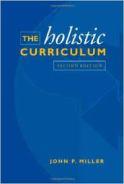 self-focus, an inevitable result of their socialization. More hopefully, the research also revealed that courses like Humanities I in Action can have a transformative effect upon students’ thinking, feeling, and actions, moving them from self-focus to finding their place in an emotionally-engaged understanding of the world (Schmidt, 2009). When confronted by the problems endemic in society, they hunger for the “wisdom, compassion and a sense of purpose in one’s life” (Miller, 2010, 30) that are marks of holistic education.
self-focus, an inevitable result of their socialization. More hopefully, the research also revealed that courses like Humanities I in Action can have a transformative effect upon students’ thinking, feeling, and actions, moving them from self-focus to finding their place in an emotionally-engaged understanding of the world (Schmidt, 2009). When confronted by the problems endemic in society, they hunger for the “wisdom, compassion and a sense of purpose in one’s life” (Miller, 2010, 30) that are marks of holistic education.
Pedagogy of Self-World Fusion: How can teachers move a student’s self-perception out of its privileged center? First, teachers can ask big questions about life’s purpose, proposing answers beyond the classroom walls. Why should students learn to write? To advocate for a just treatment for all in society. How can I use math in the future? To serve society in a technical field. A second strategy to overcome the school-life divide is to get students out of the classroom into real life situations through service and experiential learning. Thirdly, teachers can regularly incorporate references to current events in the local and international arena. These strategies diminish the general self-focus of achievement that is the assumed raison d’tre of modern schooling. At every point students can be reminded that their own personal future is less important than the collective future of the planet.
Transformation of Society and the World: Transpersonal psychologist Stan Grof argues, “If we continue the old strategies, which in their consequences are clearly extremely self-destructive, it is unlikely that the human species will survive” (2005). Although the primary developmental need of adolescent students is their own transformation, the ever-present pedagogical horizon should extend to society and even the world. Young people have a natural bent towards idealism at this time in their life; the backdrop of in-school study should be beyond-school society. Changing oneself can always have the larger purpose of creating a more equitable and sustainable future in this interconnected world.
The Humanities I in Action course both implicitly and explicitly and incorporates all of these elements of holistic education. I have often felt that it is this whole-child development in the context of whole-planet consciousness that results in students finding the course invigorating, inspiring, and paradigm-shifting. However, Jaclyn’s comment challenged me to consider that more needs to be done. And, I reflected, it is true that numerous students have told me that in their years following grade 9, Humanities I in Action became a distant dream, as if to say, “Only when we were naïve freshmen could we truly believe in making a difference.”
What kind of educational experience could be more powerful? Andrew Johnson offers this advice, “If we perceive the ultimate purpose of our schools to be the transformation of students, teachers, and ultimately society and the world . . . , then we must recognize and begin to incorporate holistic intelligence and spiritual intelligence as well” (2007, 46). I want to explore the possibility that beyond holistic education is an even a more powerful pedagogy of spiritual activation.
My Own Experience
It is at this point that my own personal experience becomes relevant. About five years ago in the wake of finishing my dissertation, I entered into a slow burn, existential crisis. A part of me was experiencing an observation attributed to Thoreau that “most men lead lives of quiet desperation and go to the grave with the song still in them.” Despite being involved in a teaching career that was very meaningful and rewarding, certain spiritual questions lay dormant and unanswered. I lived in a world in which meaning on the horizontal (material) level was relatively abundant, but the ability to know the vertical (spiritual) was gaining no traction. There was this purposeful, but still Flatland existence that lacked a stirring of the waters from above. Then I began reading Cynthia’s work and began co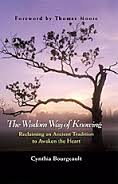 nsidering a worldview in which a reality continuum exists ranging from matter to spirit (see Wisdom Way of Knowing, 44-49). This continuum has been recognized cross-culturally; it is the ‘winnowed wisdom’ of the planet. I came to see that my beliefs that had functionally separated the world into two spheres of matter and spirit-somewhere-else was the exception, not the rule. Did I have good reason to hold onto my ‘exceptional’ beliefs, while much of the weight of spiritual teachers across time and space held an alternative view?
nsidering a worldview in which a reality continuum exists ranging from matter to spirit (see Wisdom Way of Knowing, 44-49). This continuum has been recognized cross-culturally; it is the ‘winnowed wisdom’ of the planet. I came to see that my beliefs that had functionally separated the world into two spheres of matter and spirit-somewhere-else was the exception, not the rule. Did I have good reason to hold onto my ‘exceptional’ beliefs, while much of the weight of spiritual teachers across time and space held an alternative view?
Slowly, almost imperceptibly, I reconsidered this belief and took Cynthia’s “wager” of trying Centering Prayer, a Christian form of meditation; ever so slowly some spiritual bones that had been out of joint seemed to re-align. A slow mending occurred, and a breath of life flowed into those bones. A noetic pathway was established or perhaps re-established. What was once a static, bifurcated existence with only hope of some future mystical breakthrough or life after death had gradually become a yin-yang stirring in which matter and spirit had some interaction. Most recently, this fall I took two on-line courses with Cynthia in the approach to Christmas. Despite another full-on semester of teaching, my mind-heart-body has responded with an underlying buoyancy about life that suggests that Cynthia’s teachings and practices are taking effect in tangible ways. Borrowing a Buddhist metaphor, above the low clouds of a busy fall teaching schedule was a consistently brilliant blue sky. 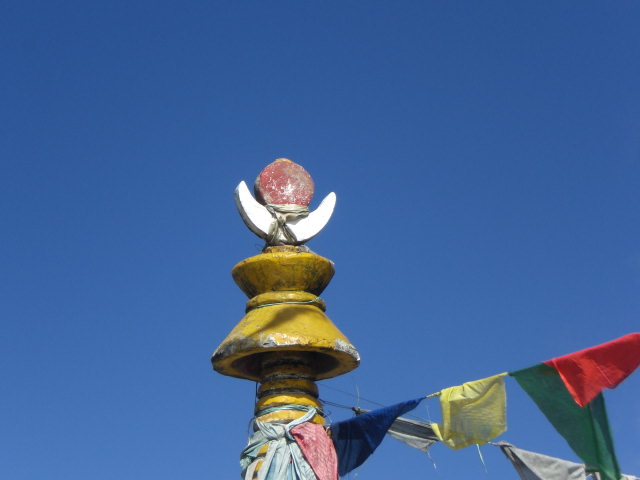
A Pedagogy of Spiritual Activation
Thus, it is my own experience, both in my personal life and with my “Service, Society, and the Sacred” class this fall, that has prompted this consideration that there may be a more powerful pedagogy than holistic education. In 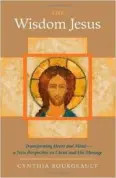 Cynthia’s Wisdom Jesus book, she writes that Jesus’ entire life seemed “sacramental,” not merely as a symbol of spiritual reality, but as “a spiritual force in its own right . . . that conveys an actual spiritual energy empowering us to follow the path that his teachings have laid out (91).” Jesus’ higher level of consciousness drew those who were receptive into a similarly higher state. By application, it is the teacher’s state of consciousness that determines this more excellent way.
Cynthia’s Wisdom Jesus book, she writes that Jesus’ entire life seemed “sacramental,” not merely as a symbol of spiritual reality, but as “a spiritual force in its own right . . . that conveys an actual spiritual energy empowering us to follow the path that his teachings have laid out (91).” Jesus’ higher level of consciousness drew those who were receptive into a similarly higher state. By application, it is the teacher’s state of consciousness that determines this more excellent way. 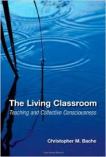 American professor of philosophy and religion Christopher Bache writes in a similar vein to Cynthia in his brilliant and provocative The Living Classroom (2008). Bache rejects the Newtonian assumption that minds are private affairs. Changing the ecology of a teacher’s mind through spiritual practices also brings about energetic changes in students; the vibrational field has been altered. His main message is that “if you are an educator who has chosen a form of spiritual practice that has the capacity to activate deep levels of the unconscious, you can expect to stimulate sympathetic resonances in at least some of your students” (40, italics in original). As a teacher, I want to teach in this more powerful way. Using these two writers’ perspectives, what seems to be the way to develop one’s own pedagogy of spiritual activation?
American professor of philosophy and religion Christopher Bache writes in a similar vein to Cynthia in his brilliant and provocative The Living Classroom (2008). Bache rejects the Newtonian assumption that minds are private affairs. Changing the ecology of a teacher’s mind through spiritual practices also brings about energetic changes in students; the vibrational field has been altered. His main message is that “if you are an educator who has chosen a form of spiritual practice that has the capacity to activate deep levels of the unconscious, you can expect to stimulate sympathetic resonances in at least some of your students” (40, italics in original). As a teacher, I want to teach in this more powerful way. Using these two writers’ perspectives, what seems to be the way to develop one’s own pedagogy of spiritual activation?
Engage in a regular spiritual practice: Cynthia writes, “Virtually every spiritual tradition that holds a vision of human transformation at its heart also claim that a practice of intentional silence is a non-negotiable. Period. You just have to do it” (2004, 9). At the most basic level, spiritual practice purifies the intentions of the teacher, which will benefit students. More profoundly, however, spiritual practice directly draws out of students aspects of their higher selves. Bache explains, “The transpersonal state of consciousness I was entering at home seemed to be activating the transindividual fabric of life around me, energizing the meridians of the collective psyche and triggering a collective intelligence that was latent in my classroom” (31). The principle of interconnectedness suggests that such an energetic transfer is likely to occur.
Teach to the body-mind-heart as a whole: While Western schooling is aimed at the mind, Cynthia explains that “trying to find faith with the intellectual center is something like trying to play a violin with a saw: it’s simply the wrong tool for the job” (2003, p. 31). Cynthia’s work, especially in these online courses, foregoes lengthy explanations, keeping mind in balance with the emotional and physical centers, including an all-important devotional aspect. This holistic approach that knows the limits of the mind, emphasizing images and metaphors oftentimes over lengthy explanations, seems to provide an activation energy that is, in her words, sacramental.
Encourage a devotional disposition towards daily life: Despite the dissatisfactions and injustices evident to all in the visible world, the appropriate response to an interconnected world that “appears as an integrated whole, a continuum of energy that shows itself to be massive, unfathomably complex, extravagantly beautiful, single organism” (Bache, 2008, 31) is awe, wonder, and a sense that on another level all is right with the universe. Thus, devotion is an appropriate response to the state of the universe. Worship of God as transcendent is complemented by a joyful appreciation of life’s essential goodness in God’s immediate presence. In the end, it is the quality of lived experience that speaks for itself. Cynthia calls this a “recognition energy,” which is “the capacity to ground-truth a spiritual experience in your own being” (2004, 8). Such inner knowing is the basis of Cynthia’s and Chris Bache’s writings, and presumably the place from which the teacher as spiritual activator carries out their work.
Conclusion
A holistic educational approach necessitates challenging the basic modern paradigm about the purpose of education. Rather than pursuing personal success as defined by conventional society, holistic education understands the essential unity of life on earth and intuits a coherent intelligence permeating the cosmos. Interconnectedness, meaning and transformation are the key words of this paradigm. Our Humanities I in Action students would agree that the course places these concepts at the center of the curriculum. However, there is a fuller dimension of holistic education that spiritual teachers such as Cynthia Bourgeault and Chris Bache point towards that I am calling a pedagogy of spiritual activation. In comparison to the descriptors of holistic education, it first requires less technical, visible changes but instead develops a deeper, more pervasive inner growth of the heart. Secondly, it seems to necessitate a stable connection with the same energy source that sustains the world. Bache writes, “Pragmatically, spiritual practices is about systematically engaging the constrictions within one’s heart, mind, and body that keep awareness trapped within the narrow, repetitive cycles that constitute the primary self and allowing one’s being to relax into its deeper currents and its innate purity, eventually opening to the crystalline clarity that is the ever-present context and source of all experience” (25). The more relaxed nature of this pedagogy allows the practitioner the freedom and space to open up and receive what is given. It becomes a moment-by-moment living in grace.
References
Alexander, H.A. (2006). “Spirituality, morality, and criticism in education: A response to Kevin Gary.” Studies in Philosophy & Education, 25, 327-334.
Bache, C. (2008). The living classroom: Teaching and collective consciousness. Albany, NY: State of New York Press.
Bourgeault, C. (2003). The wisdom way of knowing: Reclaiming an ancient tradition to awaken the heart. San Francisco, CA: JosseyBass.
Bourgeault, C. (2004). Centering prayer and inner awakening. Lanham, Maryland:Crowley.
Bourgeault, C. (2008). The wisdom Jesus: Transforming heart and mind – a new perspective on Christ and His message. Boston: Shambhala.
Caine, R.N., & Caine, G. (1997). Unleashing the power of perceptual change: The potential of brain-based teaching. Alexandria, VA: Association of Supervision and Curriculum Development.
Fry, P. (1998). The development of personal meaning and wisdom in adolescence: A re examination of moderating and consolidating factors and influences. In P. Wong & P. Fry (Eds.), The human quest for meaning: A handbook of psychological research and clinical applications (pp. 91-110). Marwah, NJ: Lawrence Erlbaum Associates.
Gordon, G. (2009). Solitude and compassion. The path to the heart of the gospel. Mary Knoll, NY: Orbis.
Johnson, A. (2007). “Becoming fully intelligent.” Encounter: Educating for meaning and social justice, 19, 40-46.
Kennedy, K. J. (2005). Changing schools for changing times: New directions for theschool curriculum in Hong Kong. Hong Kong: Chinese University Press. Maxwell, M. (2002). What is a curriculum anyway? In In O’Sullivan, E.V., Morrel, A., & O’Connor, M.A.’s, Expanding the boundaries of transformative learning. New York: Pelgrave.
Miller, J. P. (2006). Educating for wisdom and compassion: Creating conditions for timeless learning. Thousands Oaks, CA: Sage.
Miller, J. P. (2007). The holistic curriculum (2nd Ed.). Toronto: University of Toronto Press.
Miller, J.P. (2010). Whole child education. Toronto: University of Toronto.
Muir, J. (1911). My first summer in the Sierras. Boston: Houghton-Mifflin.
Nino, A. G. (2000). Spiritual quest among adolescents. In V. H. Kazanjian & P. L. Lawrence (Eds.), Education as transformation: Religious pluralism, spirituality, and a new vision for higher education in America (pp. 45-57). New York: Peter Lang.
Parker, J. P., Zajonc, A., with M. Scribner (2010). The heart of higher education: A call to renewal: Transforming the academy through collegial conversations. San Francisco: Jossey-Bass.
Schmidt, M. (2009). Teaching for social conscience in Hong Kong secondary schools. Unpublished doctoral dissertation, University of Western Australia, Perth, Australia.
Schmidt, M. E. (2012). Educating the essential self: The AQAL model in socially conscious curriculum. Journal of Integral Theory and Practice, 7, 1.
Selby, D. (2002). The signature of the whole: Radical interconnectedness and it simplications for global and environmental education. In O’Sullivan, E.V., Morrel, A., & O’Connor, M.A.’s, Expanding the boundaries of transformative learning. New York: Pelgrave.
Senge, P., Scharmer, O., Jaworski, J., & Flowers, B. S. (2004). Presence: Human purpose and the field of the future. Cambridge, MA: SoL.
Related Articles
- Spiritual Liberal Art Education by Andrew Flaxman (August 19, 2014)

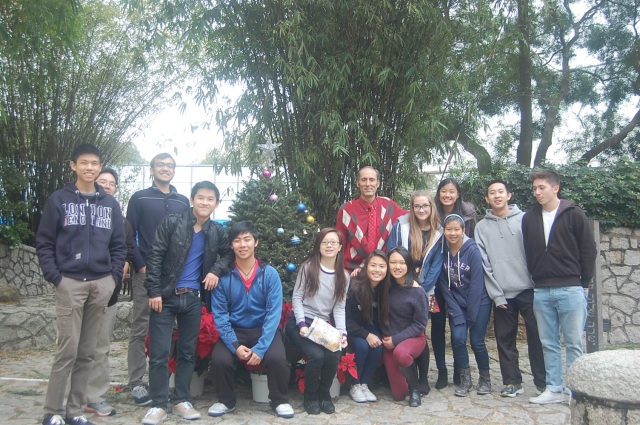
It is so wonderful to read thoughts that I’ve had but could never synthesize and articulate in such a way! Thank you for this post that is valuable for educators as well as for anyone interested in connecting to meaning in ways that help us move from lives of quiet desperation to ones of integration, growth and connection.
Thanks, Jeanne, I think you were in the courses with Cynthia, right? At one point, Cynthia says, the Gospels are build on this kind of assumption – of spiritual activation. They weren’t written for someone to teach as an academic subject the way we generally do in schools. To understand them on their own terms is to read them the way Cynthia instructs. But it wasn’t until I started doing the practices that these pieces became part of my “recognition energy.”
Pingback: Body, Mind and Heart: A New Curriculum Approach to “Service, Society, and the Sacred” | Social Conscience and Inner Awakening
Pingback: Education for Transformation: Introducing Humanities I in Action | Social Conscience and Inner Awakening
Pingback: “I Feel Myself Radiating with Life:” One Student’s Journey of Awakening through Holistic Education Courses | Social Conscience and Inner Awakening
Reblogged this on I am speechless with wonder and commented:
Marty — your students are blessed to have you as their “kaiako” (tutor) and wisdom guide. Blessings to you and your amazing Ministry…
Thanks again for amazing insights. I especially appreciate your superb bibliographies, Marty! They’re incredible!
Appreciate the comment. The bibliography is in prep for a peer-reviewed article that is still very much in the works – interviewing teachers of social conscience. In terms of the blog content, this past summer I re-thought the curriculum to make it less non-sequitor, using Cynthia’s three-centered awareness. I’m teaching it now for a second time, and I’m very pleased with the result. Students are getting it on a much deeper and clearer level. I spent much of today grading essays and re-thinking the April and May part of the curriculum. I’m feeling very good about the new organization of the course: https://martinschmidtinasia.wordpress.com/2015/08/10/body-mind-and-heart-a-new-curriculum-approach-to-service-society-and-the-sacred/